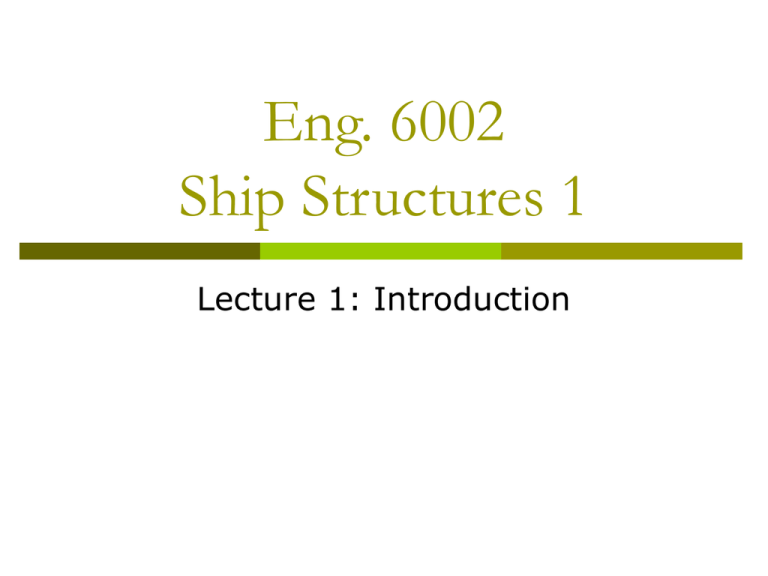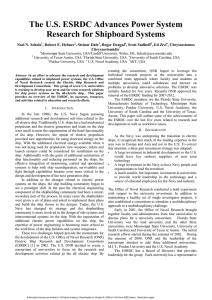Lecture 1
advertisement

Eng. 6002 Ship Structures 1 Lecture 1: Introduction Preliminaries Instructor: Dave Murrin Lectures: Monday, Wednesday, Friday from 9:009:50 am Office: EN-2077e Phone: 737-2573 Email: murrin@engr.mun.ca There is a tutorial slot which will also be used for the design project Office Hours: To be announced Description Aim: to introduce students to ship structural design, through study of the hull girder. The course examines the elastic (intact) behaviour of ships and ship structural elements and asks two things of the student: To develop an understanding of the elastic behaviour of ship structures (actions/reactions within deforming bodies) to develop an ability to proportion a ship structure in a way that satisfies the given constraints and achieves an appropriate hierarchy of strength. Grading Scheme The grading system for this course is comprised of a design project, several short assignments, a midterm examination, and a final examination. The relative weight of each component is as follows: Assignments 10% Design Project 15% (Due Nov. 19th) Mid-term Examination 20% (~ Oct. 12th) Final Examination 55% Reference Texts Hughes, O.F., 1983, Ship Structural Design, Wiley-Interscience, Published by the Society of Naval Architects and Marine Engineers, New York (1988) Lewis, E.V., (Editor) 1975, Principles of Naval Architecture, Vol. I Chapter 4., SNAME Rawson, K.J., and Tupper, E.C., 1983 Basic Ship Theory, Volume I, Published by Longman, 3rd Ed. Introduction Ship structures have evolved Traditional design Empirical based on experience Rules based, published by classification societies Rule-based design Pros: A rulebook approach to design provides simple formulas for the structural dimensions (or ‘scantlings’) of a ship This saves time in the design office, and approval process. Rule-based design Cons: Formulas do not give an efficient design, and tend to have large (and sometimes unnecessary) safety factors built into them Costly in terms of steel The formulas can only be used within limits and may be inaccurate outside of the intended range. Dangerous for innovative designs Rationally-Based Design Rationally-based design is directly and entirely based on structural theory and computer-based methods of structural analysis and optimization, and which achieves an optimum structure on the basis of a designer-selected measure of merit Hughes Rationally-Based Design Used in aircraft, aerospace, and offshore structures. High economic stakes Classification societies have encouraged and contributed greatly to the methods Requires a computer and basic knowledge of numerical methods, finite element analysis, and experience in structural design Rational Structural Design Process






